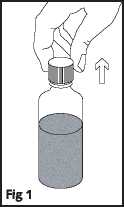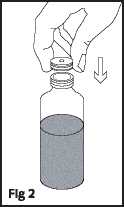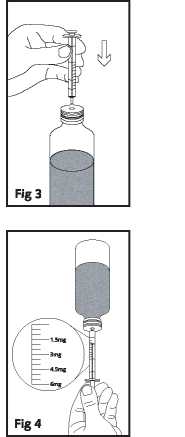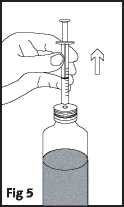Rivastigmine 2Mg/Ml Oral Solution
Out of date information, search anotherPACKAGE LEAFLET: INFORMATION FOR THE USER
Read all of this leaflet carefully before you
start taking this medicine.
• Keep this leaflet. You may need to read it again.
• If you have any further questions, ask your doctor or pharmacist.
• This medicine has been prescribed for you. Do not pass it on to others. It may harm them, even if their symptoms are the same as yours.
• If any of the side effects gets serious, or if you notice any side effects not listed in this leaflet, please tell your doctor or pharmacist.
Rivastigmine may cause dizziness and somnolence, mainly at the start of treatment or when increasing the dose. If you feel dizzy or sleepy do not drive, use machines or perform any tasks that require your attention.
IN THIS LEAFLET:
Important information about some of the ingredients of Rivastigmine
One of the inactive ingredients in Rivastigmine oral solution is sodium benzoate. Benzoic acid is a mild irritant to the skin, eyes and mucous membranes. This medicinal product also contains very small amounts of glucose, a type of sugar. If you have been told by your doctor that you have an intolerance to some sugars, contact your doctor before taking this medicinal product. Glucose may be harmful to the teeth.
1. What Rivastigmine is and what it is used for
2. Before you take Rivastigmine
3. How to take Rivastigmine
4. Possible side effects
5. How to store Rivastigmine
6. Further information

HOW TO TAKE RIVASTIGMINE
Always take Rivastigmine exactly as your doctor has told you. You should check with your doctor or pharmacist if you are not sure.
OWHAT RIVASTIGMINE IS AND WHAT IT IS USED FOR
Rivastigmine belongs to a class of substances called cholinesterase inhibitors.
Rivastigmine is used for the treatment of memory disorders in patients with Alzheimer's disease. It is also used for the treatment of dementia in patients with Parkinson's disease.

BEFORE YOU TAKE RIVASTIGMINE
Before taking Rivastigmine it is important that you read the following section and discuss any questions you might have with your doctor.
How to start treatment
Your doctor will tell you what dose of Rivastigmine to take.
• Treatment usually starts with a low dose
• Your doctor will slowly increase your dose depending on how you respond to the treatment
• The highest dose that should be taken is 6.0 mg twice a day.
Your doctor will regularly check if the medicine is working for you. Your doctor will also monitor your weight whilst you are taking this medicine. If you have not taken Rivastigmine for several days, do not take the next dose until you have talked to your doctor.
Do not take Rivastigmine
• if you are allergic (hypersensitive) to rivastigmine or to any of the other ingredients of Rivastigmine listed in Section 6 of this leaflet.
If this applies to you, tell your doctor and do not take Rivastigmine.
Take special care with Rivastigmine
• if you have, or have ever had irregular heartbeat
• if you have, or have ever had an active stomach ulcer
• if you have, or have ever had difficulties in passing urine
• if you have, or have ever had seizures
• if you have, or have ever had asthma or severe respiratory disease
• if you have, or have ever had impaired kidney function
• if you have, or have ever had impaired liver function
• if you suffer from trembling
• if you have a low body weight
• if you have gastrointestinal reactions such as feeling sick (nausea), being sick (vomiting) and diarrhoea. You may become dehydrated (losing too much fluid) if vomiting or diarrhoea are prolonged.
If any of these apply to you, your doctor may need to monitor you more closely while you are on this medicine.
If you have not taken Rivastigmine for several days, do not take the next dose until you have talked to your doctor.
The use of rivastigmine in children and adolescents (age below 18 years) is not recommended.
Taking other medicines
Please tell your doctor or pharmacist if you are taking or have recently taken any other medicines, including medicines obtained without a prescription.
Rivastigmine should not be given at the same time as other medicines with similar effects to Rivastigmine. Rivastigmine might interfere with anticholinergic medicines (medicines used to relieve stomach cramps or spasms, to treat Parkinson's disease or to prevent travel sickness).
If you have to undergo surgery whilst taking Rivastigmine, tell your doctor before you are given any anaesthetics, because Rivastigmine may exaggerate the effects of some muscle relaxants during anaesthesia.
Pregnancy and breast-feeding
Tell your doctor if you become pregnant during treatment. It is preferable to avoid the use of rivastigmine during pregnancy, unless clearly necessary.
You should not breast-feed during treatment with Rivastigmine.
Ask your doctor or pharmacist for advice before taking any medicine.
Driving and using machines
Your doctor will tell you whether your illness allows you to drive vehicles and use machines safely.
Taking this medicine
• Tell your caregiver that you are taking Rivastigmine
• To benefit from your medicine, take it every day
• Take Rivastigmine twice a day, in the morning and evening, with food.
Instructions for Use: Rivastigmine 2 mg/ml Oral Solution

2. Keep the bottle upright on a flat surface and insert the plastic bottle adapter into the open end of the bottle. The adaptor is provided so that you can fill the syringe with medicine from the bottle. (Fig 2)
4. Turn the bottle upside down while holding the syringe in place. Slowly pull back the plunger of the syringe to the numbered line on the syringe that indicates the prescribed dose (graduation mark). For example, for a dose of 1.5 mg, withdraw the oral solution up to the 1.5 mg graduation mark. (Fig 4)
1. Push down and turn child resistant cap to open the bottle.
(Fig 1)


3. Insert the tip of the oral dosing syringe into opening of the bottle adapter.
(Fig 3)

Warning: The syringe is marked in mg not ml. It should not be used with any other medicine. Keep the syringe in the original carton with your medicine.
5. Before removing the syringe from the bottle make sure that there are no large bubbles
in the syringe. If large bubbles are visible depress the plunger back into syringe and withdraw the dose again (see step 4).
The presence of a few tiny bubbles will not affect the dose.
6. When the required dose is withdrawn into the syringe, turn the bottle back into the upright position with the syringe still in place.
Remove the syringe from the bottle.
(Fig 5)

7. Put the tip of the syringe into the mouth. Point the tip of the syringe to the inside of the cheek. Slowly push the plunger of the syringe and swallow the solution. Alternatively put the tip of the syringe into a small glass of water. Slowly push the plunger. Mix the resulting solution in the glass and then drink the mixture.
8. Replace the cap and close the bottle, leaving the bottle adapter in place.
Warning: Store the bottle in the upright position.
9. Clean the syringe after each use by pulling the plunger out of the syringe and washing both parts in warm soapy water. Rinse in clean water and then allow both parts to air dry.
10. Push the plunger back into the syringe. Keep the syringe in the original carton with your medicine.
If you take more Rivastigmine than you should
If you accidentally take more rivastigmine than you should, inform your doctor. You may require medical attention. Some people who have accidentally taken too much rivastigmine have experienced feeling sick (nausea), being sick (vomiting), diarrhoea, high blood pressure and hallucinations. Slow heart beat and fainting may also occur.
If you forget to take Rivastigmine
If you find you have forgotten to take your dose of Rivastigmine, wait and take the next dose at the usual time. Do not take a double dose to make up for a forgotten dose.
If you have any further questions on the use of this product, ask your doctor or pharmacist.
Very rare
• High blood pressure
• Urinary tract infection
• Seeing things that are not there (hallucinations)
• Problems with your heartbeat such as fast or slow heartbeat
• Bleeding in the gut - shows as blood in stools or when being sick
• Inflammation of the pancreas - the signs include serious upper stomach pain, often with feeling sick (nausea) or being sick (vomiting)
• The signs of Parkinson's disease get worse or getting similar signs - such as stiff muscles, difficulty in carrying out movements.
Not known
• Being violently sick (vomiting) that can cause tearing of the tube that connects your mouth with your stomach (oesophagus)
• Dehydration (losing too much fluid)
• Liver disorders (yellow skin, yellowing of the whites of eyes, abnormal darkening of the urine or unexplained nausea, vomiting, tiredness and loss of appetite)
• Aggression, feeling restless
• Uneven heartbeat.
Patients with dementia and Parkinson's disease
These patients have some side effects more often. They also have some additional side effects:
Very common
• Trembling.
Common
• Anxiety
• Feeling restless
• Slow heartbeat
• Difficulty in sleeping
• Too much saliva and dehydration
• Unusually slow movements or movements you cannot control
• The signs of Parkinson's disease get worse or getting similar signs - such as stiff muscles, difficulty in carrying out movements.
Uncommon
• Uneven heartbeat and poor control of movements.
Other side effects seen with Exelon (rivastigmine) transdermal patches and which may occur with the oral solution: Common
• Fever
• Severe confusion.
If you get any of these side effects, contact your doctor as you may need medical assistance.
If any of the side effects gets serious, or if you notice any side effects not listed in this leaflet, please tell your doctor or pharmacist.
4 POSSIBLE SIDE EFFECTS

HOW TO STORE RIVASTIGMINE
Like all medicines, rivastigmine can cause side effects, although not everybody gets them.
You may have side effects more often when you start taking your medicine or when your dose is increased. Usually, the side effects will slowly go away as your body gets used to the medicine. The frequencies are defined as:
Very common (affects more than 1 patient in 10) Common (affects 1 to 10 patients in 100) Uncommon (affects 1 to 10 patients in 1,000) Rare (affects 1 to 10 patients in 10,000)
Very rare (affects less than 1 patient in 10,000) Not known (frequency cannot be estimated from the available data).
Very common
• Feeling dizzy
• Loss of appetite
• Stomach problems such as feeling sick (nausea) or being sick (vomiting), diarrhoea.
Common
• Anxiety
• Sweating
• Headache
• Heartburn
• Weight loss
• Stomach pain
• Feeling agitated
• Feeling tired or weak
• Generally feeling unwell
• Trembling or feeling confused.
Uncommon
• Depression
• Difficulty in sleeping
• Fainting or accidentally falling
• Changes in how well your liver is working.
Rare
• Chest pain
• Rash, itching
• Fits (seizures)
• Ulcers in your stomach or intestine.
Keep out of the reach and sight of children.
Do not use Rivastigmine 2 mg/ml Oral Solution after the expiry date which is stated on the bottle and the carton after 'EXP:'. The expiry date refers to the last day of that month. Store the bottle in an upright position.
Use Rivastigmine 2 mg/ml Oral Solution within 1 month of opening bottle.
Medicines should not be disposed of via wastewater or household waste. Ask your pharmacist how to dispose of medicines no longer required. These measures will help to protect the environment.
g FURTHER INFORMATION
What Rivastigmine oral solution contains
• The active substance is rivastigmine (as hydrogen tartrate). Each ml of solution contains 2.0 mg of rivastigmine
• The other ingredients are sodium benzoate (E211), sodium citrate, citric acid anhydrous, purified water and yellow 06 098 dye which contains quinoline yellow (E104), glucose, sodium sulphate and silicon dioxide (E551).
What Rivastigmine 2 mg/ml Oral Solution looks like and contents of the pack
Rivastigmine 2 mg/ml Oral Solution is available as 120 ml of a clear greenish-yellow solution in a brown glass bottle closed with a child-resistant cap. The bottle of oral solution is packaged with a plastic oral dosing syringe and a plastic press-in bottle adapter.
Marketing Authorisation Holder
PLIVA Pharma Limited, Ridings Point, Whistler Drive, Castleford, West Yorkshire, WF10 5HX Manufacturer
Teva Operations Poland Sp. z.o.o., ul.
Mogilska 80, 31-546, Krakow Poland This leaflet was last revised in March 2012.
PL 10622/0450 88346-B 12345678 0)